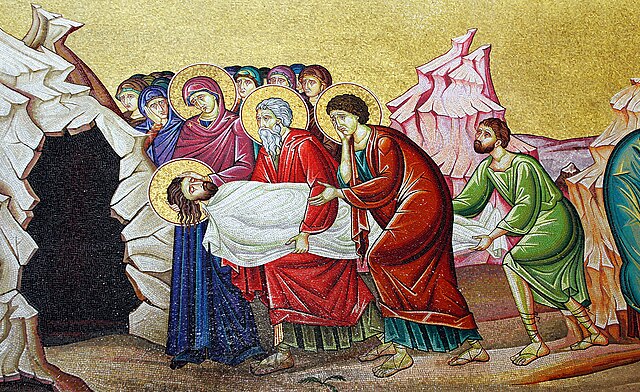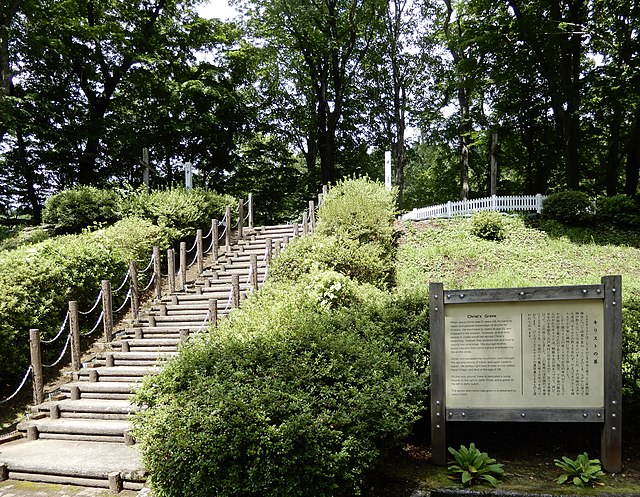The burial of Jesus refers to the entombment of the body of Jesus after his crucifixion before the eve of the sabbath. This event is described in the New Testament. According to the canonical gospel narratives, he was placed in a tomb by a councillor of the Sanhedrin named Joseph of Arimathea; according to Acts 13:28–29, he was laid in a tomb by "the council as a whole". In art, it is often called the Entombment of Christ.
The Entombment of Christ by Caravaggio (c. 1603) follows the Gospel of John: Nicodemus and Joseph of Arimathea jointly embalm and place Jesus in a tomb, while Jesus's mother Mary, Mary Magdalene and Mary of Clopas look on.
Wall mosaic of the entombment of Jesus near the Stone of anointing at Church of the Holy Sepulchre.
The Entombment of Christ by Pedro Roldán
The entombment of Christ by Rubens
The tomb of Jesus is the place where Jesus was entombed after his death. According to the gospel accounts, the tomb originally belonged to Joseph of Arimathea, a wealthy man who, believing Jesus was the Messiah, offered his own sepulcher for the burial of Jesus.
Jesus is laid in the tomb and covered in incense. Station 14 of the Calvary of the Church of Our Lady of the Assumption (Villamelendro de Valdavia).
The Garden Tomb in Jerusalem.
Roza Bal shrine in Srinagar, Kashmir
Alleged tomb of Jesus in Shingo Village








